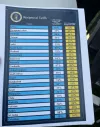
Introduction: The Overlooked Impact of Deregulation on Drayage
When most people think of trucking deregulation, they immediately picture long-haul carriers and the landmark Motor Carrier Act of 1980. Yet, drayage—the essential short-haul trucking that connects ports to warehouses, rail yards, and distribution centers—is often overlooked. A veteran drayage operator in Los Angeles recalled, “We didn’t see it coming, but deregulation hit us in ways we never imagined.”
The effects on drayage weren’t the result of a single policy but rather a cascade of broader industry changes. As competition ramped up, wage structures, pricing, and market consolidation experienced dramatic shifts. Meanwhile, state-level deregulation, particularly in California and Illinois, accelerated these changes further.
This article examines:
- How trucking deregulation indirectly reshaped drayage
- Economic data on freight rates, wages, and market consolidation
- The role of state-level reforms in California and Illinois
- A historical perspective enriched with on-the-ground insights
📌 Did You Know? Before deregulation, trucking companies had to apply for operating authority from the government, and it was so difficult to obtain that some permits were sold for millions of dollars—almost like taxi medallions in New York City!
The Pre-Deregulation Era: Stability and Constraints
How the ICC Regulated Trucking Before 1980
Before deregulation in 1980, the trucking industry was tightly controlled by the Interstate Commerce Commission (ICC), established under the Motor Carrier Act of 1935. The rules were clear-cut:
- Market Entry: New carriers needed ICC approval, limiting competition.
- Rate Setting: Standardized freight rates left little room for negotiation.
- Operational Restrictions: Strict guidelines dictated which routes and types of cargo carriers could handle.
These measures were intended to stabilize the industry but also stifled innovation and kept prices artificially high. One industry historian described the stability as "a calm before the storm—but that calm wasn’t always in the consumer’s favor." (GAO, 1986).
📌 Did You Know? In the 1960s and 70s, ICC regulations made it illegal for trucking companies to change their rates without government approval—meaning it sometimes took months just to lower prices for customers!

The Push for Deregulation: Political, Economic, and Social Factors
By the late 1970s, policymakers argued that decades-old regulations were choking innovation and hampering free enterprise. In their analysis, Derthick and Quirk (1985) detailed how entrenched interests and obsolete rules inhibited competitive practices in the transportation sector. Economic analyses revealed that controlled rates and rigid market entry requirements inflated costs for both shippers and consumers while stifling competition among carriers (Morrison & Winston, 2000).
Social factors also played a role. Consumer advocacy movements and public demand for more efficient services helped catalyze deregulation. Belzer (2000) noted that the move toward a more competitive environment was not only about economics but also about improving working conditions and reducing exploitative practices. With public skepticism of government overreach growing, deregulation was seen as a way to foster creativity, operational efficiency, and industry innovation (Brookings, 2025).
The convergence of these political, economic, and social factors led to a watershed moment in U.S. transportation policy. The Motor Carrier Act of 1980 was not just an administrative adjustment but a deliberate shift toward a more competitive marketplace, promising lower prices, increased service options, and a stronger transportation sector.
📌 Did You Know? President Jimmy Carter played a key role in trucking deregulation, but one of its biggest supporters was Ted Kennedy, who led the charge to reduce government control over the industry. It was one of the few bipartisan efforts of the time!
Impact on Pricing and Service Quality
Deregulation significantly reduced shipping costs. Data from Econlib’s overview on Trucking Deregulation shows that between 1977 and 1982, rates for truckload-size shipments fell by approximately 25% in real, inflation-adjusted terms. The General Accounting Office (GAO) found that rates charged by less-than-truckload (LTL) carriers decreased by 10 to 20%, with some shippers reporting declines of up to 40% (GAO, 1986).
A survey of shippers from that time indicated that service quality improved alongside these cost reductions, with 77% of respondents expressing favorability toward deregulation. Carriers became more willing to negotiate rates and services, leading to innovations such as restructured routes, reduced empty return hauls, and simplified rate structures.
📌 Did You Know? The cost of trucking freight dropped by up to 40% in some cases after deregulation, saving businesses and consumers billions of dollars—but it also led to the rise of independent owner-operators, changing the workforce forever.
How Deregulation Indirectly Transformed Drayage
The Motor Carrier Act of 1980 marked a turning point by removing many federal restrictions on interstate trucking, leading to:
- Lower freight rates: Increased competition drove prices down.
- More market entrants: New carriers emerged, eroding old barriers.
- Greater operational flexibility: Companies could finally adjust services dynamically.
Drayage, often overlooked, remained under state-level control, but the ripple effects were profound. Freight rates dropped by about 22% over the decade after deregulation (Brookings), forcing drayage operators to cut costs. The shift toward independent contractors offloaded financial risks from companies to individual drivers—a change with lasting repercussions (JSTOR).
📌 Did You Know? Ports were once dominated by unionized truckers, but after deregulation, the industry shifted toward independent contractors—which is why today’s port trucking is one of the most fragmented and competitive sectors in logistics.
State-Level Deregulation in California and Illinois
California: Deregulation & Competition Laws
California Motor Transport Co. v. Trucking Unlimited (1972): This Supreme Court decision ruled that established trucking firms couldn’t use regulatory proceedings to block new competitors, paving the way for greater competition (Oyez).
Illinois: Aligning State Regulations with Federal Reforms
Illinois Intrastate Trucking Deregulation (1985): Illinois removed state-level restrictions, boosting competition in the Chicago area (FHWA).
📌 Did You Know? California’s drayage market is one of the most expensive and highly regulated in the country today—even though the state played a huge role in deregulation during the 1980s!
Charting the Course: How Deregulation Shaped Drayage
While the deregulation of interstate trucking in 1980 is well-documented, its ripple effects on drayage are equally significant. Unlike long-haul trucking, drayage had to navigate a maze of state and local regulations even as the federal landscape shifted.
Smaller drayage operators found themselves squeezed by a fragmented market. The traditional model gave way to an owner-operator-driven approach—cutting costs but shifting financial risks onto individual drivers. One industry veteran remarked, “The promise of lower rates came at a price—one that many drivers still pay today.”
Competitive pressures led to consolidation among larger logistics firms and a decline in wage stability for independent drivers. These trends continue to shape challenges like port congestion and contractor classification debates.
In essence, the story of drayage is a microcosm of the broader transportation deregulation saga—a tale of innovation, fierce competition, and evolving challenges that persist today.
📌 Did You Know? Some of the biggest trucking companies today, like J.B. Hunt and Schneider, saw their fastest growth after deregulation, as they expanded into markets that were previously off-limits!
Cited Sources
- GAO Report: Budgetary Effects of the Elimination of ICC's Trucking Regulatory Responsibilities (1986)URL: https://www.gao.gov/assets/129908.pdf
- Brookings Institution – Lessons from 40 Years of Transportation DeregulationURL: https://www.brookings.edu/topics/transportation-industry/?page=3
- Oyez – California Motor Transport Co. v. Trucking Unlimited (1972)URL: https://www.oyez.org/cases/1971/70-92
- CARB Drayage Trucks ProgramURL: https://ww2.arb.ca.gov/our-work/programs/drayage-trucks
- FHWA – Illinois Intrastate Trucking Deregulation (1985)URL: https://www.fhwa.dot.gov/policy/otps/innovation/issue1/ii1intrastate.cfm
- Illinois DOT – Intermodal Freight SystemURL: https://idot.illinois.gov/transportation-system/Network-Overview/Intermodal-System/Intermodal-Freight
- ATRI – Trucking Research ReportsURL: https://truckingresearch.org/research/
- JSTOR – Transportation Law JournalURL: https://www.jstor.org/journal/translawj
Further Reading
- Demos – Port Trucking Down the Low Road: https://www.demos.org/research/port-trucking-down-low-road
- FHWA – National Freight Policy and Supply Chain Regulations: https://ops.fhwa.dot.gov/freight/freight_analysis/nat_freight_stats/docs/10factsfigures/index.htm
- ATRI – The Impact of Regulatory Costs on Trucking: https://truckingresearch.org/2020/11/24/atri-updates-operational-costs-of-trucking-report/






